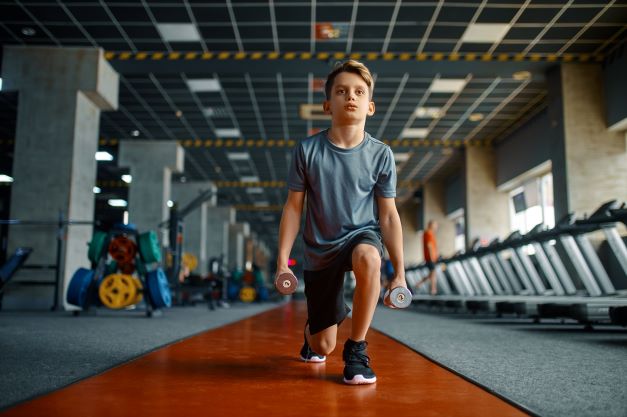In our last article, we discussed the safety of youth strength training. In addition to being safe for children, strength training also reduces injury risk. It is proven to reduce injuries in adolescents who play football, soccer, basketball, and various other sports.
Adolescent females are especially vulnerable to knee injuries. Preseason conditioning programs that include plyometric training, resistance training, and jump training significantly reduce knee injuries in female athletes. Also, youth athletes who engage in regular strength training recover quicker from injuries when they do occur.
When to Incorporate Strength Training for Children
Youth athletes benefit from developing fundamental movement skills like jumping, landing, and throwing. Encouraging appropriate fitness conditioning at early ages (6-10 years old) develops these skills. Once fundamental movement skills are mastered, appropriately supervised strength training programs begin.
Strength training reduces overuse injuries by as much as 50%. It does so by addressing specific risk factors associated with youth-sport injuries. Some of these risk factors are low fitness, muscle imbalances, and training errors. With early exposure to strength training, athletes prevent the development of deficits that predispose them to injury later in life.
Strength Training for Youth Non-Athletes
Free-time play among children and adolescents is on the decline. Strength training is beneficial for athletes and children that do not play competitive sports. Physical inactivity is a risk factor for activity-related injuries in children. Those who regularly participate in age-appropriate fitness programs, including strength training, are less likely to suffer an injury during free play.
The Bottom Line About Youth Strength Training

Although the total elimination of injuries is unrealistic, appropriately designed strength and conditioning programs reduce the likelihood of injury. Clearly, incorporating strength training supervised by qualified professionals is in the best interest of your child. Doing so will result in a healthy and high-performing athlete. Our next article discusses the role of resistance training in improving athletic performance.

